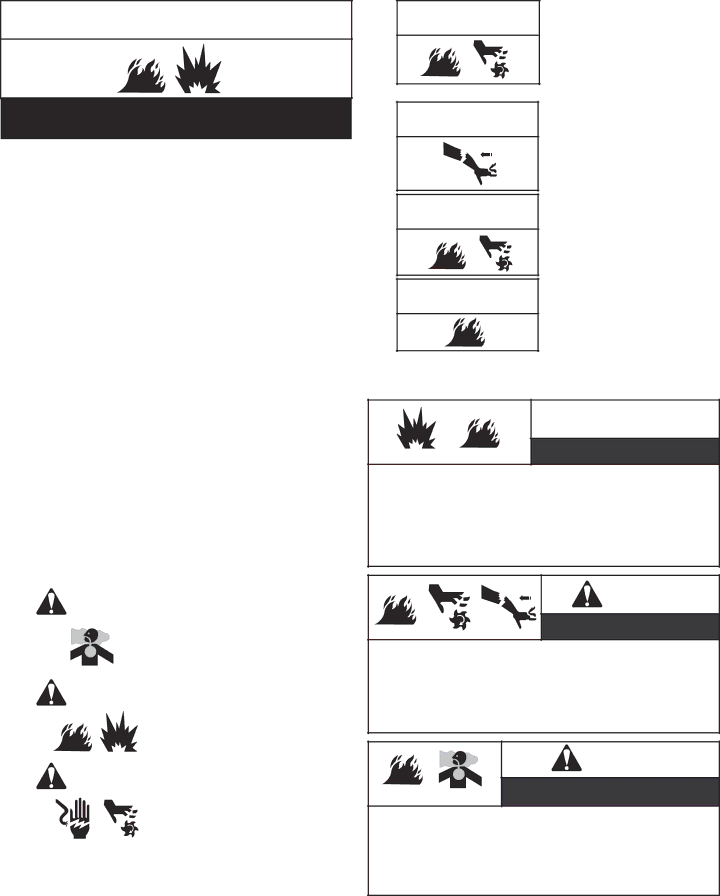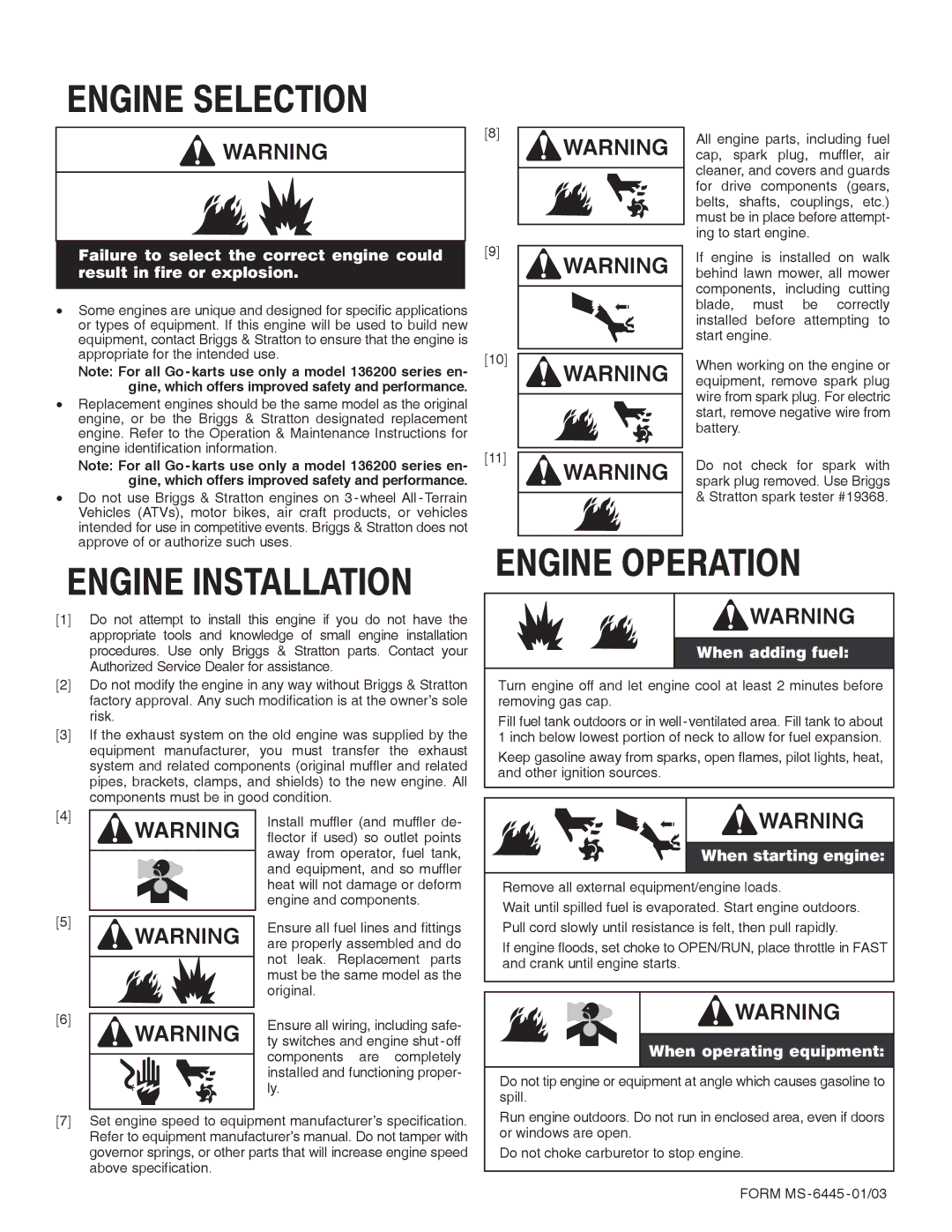14C, 14B, 14, 14F, 14FB specifications
Briggs & Stratton is a venerable name in the world of small engines, synonymous with reliability and innovation. Among their esteemed lineup is the 14FBC, 14FBPC, 14B, 14R6D, and 14C engines, which are engineered to meet demanding power requirements for various applications. These engines cater to a diverse array of machinery, including lawnmowers, generators, and pressure washers, showcasing versatility and robust performance.One of the defining features of these engines is their compact design, which allows for easy integration into different machinery. The 14FBC and 14FBPC models, for instance, are particularly noted for their lightweight construction, enabling manufacturers to create more efficient and user-friendly products. These engines typically feature a horizontal shaft layout that enhances stability and performance.
The 14B and 14R6D models come equipped with advanced air filtration technologies, ensuring optimal airflow and engine life. The engineered air filtration system effectively prevents contaminants from entering the engine, even in the most demanding environments. This translates to less frequent maintenance while maximizing the durability of the engine.
Briggs & Stratton has also incorporated their patented ReadyStart system into these engines, enhancing the starting experience. The ReadyStart system eliminates the need for a choke by automatically adjusting based on temperature and atmospheric conditions. This innovation not only simplifies the starting process but also improves reliability in varying weather conditions.
A standout characteristic of the 14C engine is its fuel efficiency, achieved through a combination of optimized combustion chamber design and precision engineering. This allows for reduced emissions and lower operational costs, aligning with modern environmental standards. The engines are designed to run smoothly with minimal vibration, contributing to an improved user experience.
The ease of maintenance is another significant feature of these engines. Briggs & Stratton has designed their products with accessible service points, enabling users to conduct routine checks and oil changes with minimal hassle. This user-centric approach ensures that even novice users can maintain the engine effectively, prolonging its lifespan.
In conclusion, the Briggs & Stratton 14FBC, 14FBPC, 14B, 14R6D, and 14C engines combine advanced technology, reliability, and user-friendly design. Their features cater to a variety of applications, ensuring that consumers have access to durable and efficient power solutions for their needs. Whether for commercial use or residential applications, these engines stand as a testament to Briggs & Stratton's commitment to quality and innovation in small engine technology.

